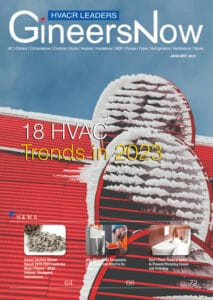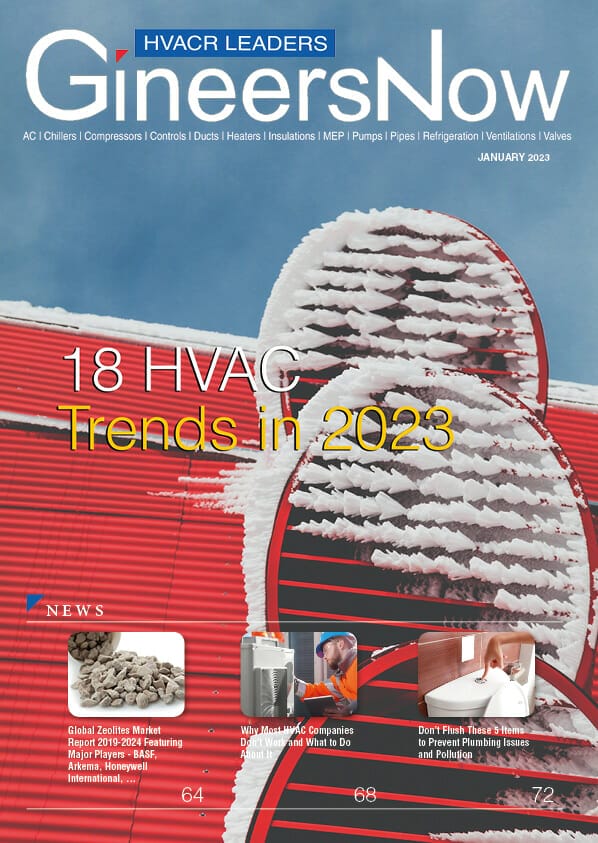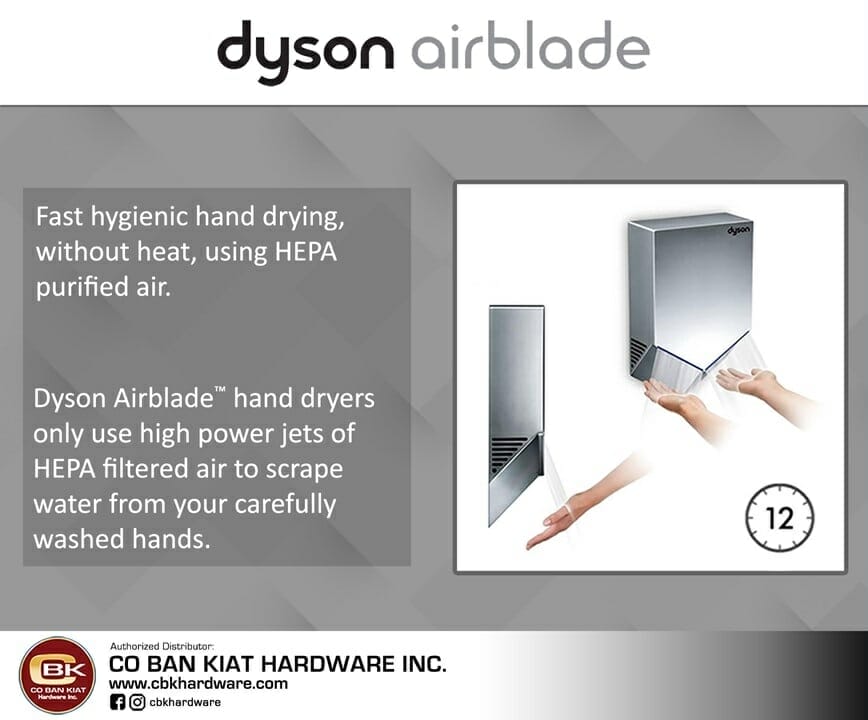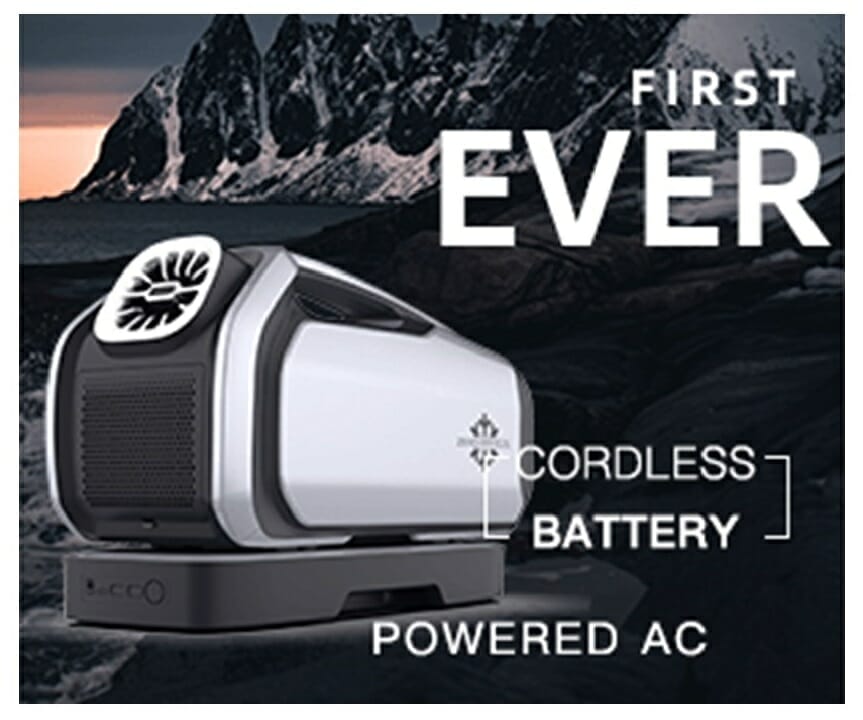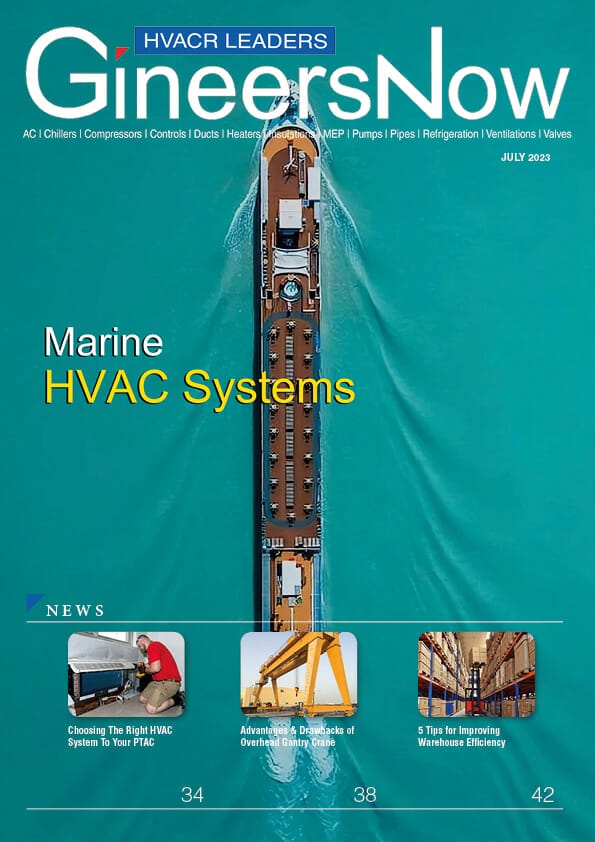As the years pass, technology evolves, and so does the HVAC industry. With advancements in design and efficiency, HVAC trends clearly indicate where the industry is headed. This article will explore some of the most up-and-coming HVAC trends in 2023.
Looking ahead to 2023, there are many changes in store for HVAC technology that could revolutionize the industry. We will discuss 18 of the most noteworthy trends predicted for HVAC in 2023 and why they may benefit consumers.
Here are the 18 global HVAC trends in 2023:
1. Smart Thermostats
The HVAC industry is always looking for ways to serve its customers better and give them the most up-to-date technology. In 2023, smart thermostats are expected to be one of the hottest trends in HVAC. Smart thermostats are advanced digital systems that allow homeowners to manage their heating and cooling from wherever they are with their smartphone or tablet. Not only do these thermostats provide convenience, but they can also help reduce energy costs by allowing users to control temperature settings with just a few clicks.
Smart thermostats have extra features such as voice commands, remote climate control, and even a built-in artificial intelligence system that learns user preferences over time. A smart thermostat is one of the HVAC trends in 2023.
What are the benefits of smart thermostats?
Smart thermostats are becoming increasingly popular as homeowners look for ways to reduce their energy consumption and save money on heating and cooling costs. According to the latest HVAC Trends in 2023 report by GineersNow, more than half of all households will have smart thermostats by 2023. Smart thermostats are designed to give users precise control over their homes’ temperatures, allowing them to set different settings for different times of the day or even adjust settings based on occupancy. This can help homeowners save money by controlling how much energy is used.
In addition, smart thermostats also provide users with additional convenience and comfort options. With various customization features, users can create personalized temperature settings for each room in the home and even set schedules that automatically adjust the temperature when no one is home or when people come back from work or vacation.
2. Home Automation Systems
The field of HVAC is constantly evolving and changing as technology advances. In 2023, the most significant trend in HVAC systems will be the introduction of home automation systems. These high-tech systems promise to improve energy efficiency and user experience significantly. Homeowners will benefit from having total control over their thermostat settings, air quality, and other elements that make up a comfortable living environment. Home automation is one of the HVAC trends in 2023.
Smart home automation systems can be used to regulate temperatures throughout the home based on location or time of day. This allows for maximum energy efficiency while still providing a comfortable living space for all occupants. Systems can also be programmed to detect when doors are opened or closed, automatically adjusting temperatures accordingly for even more savings on energy costs.
What are the benefits of home automation systems?
Technology has come a long way in recent years, and the HVAC (Heating, Ventilation, and Air Conditioning) industry is no exception. In 2023, homeowners will be looking to make their lives easier with home automation systems. These systems offer convenience, safety, energy efficiency, and money savings.
Home automation systems allow homeowners to control their HVAC system from anywhere in the world using an app or remote control device. This means you can adjust your temperature for improved comfort with just a few taps on your phone or computer. It also allows you to access real-time data about your home’s energy use for more efficient operation of your system – helping you save money on utility bills each month!
3. Remote Monitoring & Diagnostics
As the HVAC industry focuses on meeting customer needs and staying up to date with technology, remote monitoring and diagnostics will be the biggest trends in 2023. This trend has become increasingly popular as it allows technicians to quickly identify problems without traveling to the location. Remote monitoring is one of the HVAC trends in 2023.
Remote monitoring allows technicians to stay connected with their clients by using a variety of sensors or devices that can detect temperature, humidity, air quality levels, and other data points. The collected data is then analyzed remotely so any issues can be identified from anywhere in the world. Additionally, remote diagnostics allow for a more efficient process, as repairs can often be made without an on-site visit. This can lead to cost savings for customers and faster repair resolution time.
What are the benefits of remote monitoring?
In today’s age of technological advancement, remote monitoring is quickly becoming an important part of HVAC systems. Remote monitoring offers many advantages that are transforming the industry and making it easier to manage HVAC systems in 2023 and beyond.
Remote monitoring can save time and money by providing real-time analysis of equipment performance, ensuring equipment runs efficiently with no problems or breakdowns. This data can be used to help identify areas where energy consumption could be improved, leading to lower energy bills for homeowners. Additionally, remote monitoring allows users to access their HVAC system remotely from anywhere with an internet connection; this makes it easy for technicians to monitor the system and make adjustments when necessary without having to be physically present on site.
4. Increased Efficiency Standards
As the HVAC world continues to evolve, 2023 is set to be a year of increased efficiency standards. With climate change a pressing global issue and an ever-increasing need for energy conservation, the industry will have to step up its game to improve efficiency standards. Efficiency is one of the HVAC trends in 2023.
The HVAC industry has already started taking steps towards greater efficiency by introducing new technologies such as variable speed compressors, smart thermostats, and advanced refrigerant management systems. But with more stringent regulations on energy usage looming in 2023, these measures alone won’t be enough. As such, companies must look beyond traditional means of improving efficiency and explore alternative methods, such as utilizing renewable energy sources or better insulation materials.
What are the benefits of increased efficiency standards?
In the HVAC industry, efficiency standards are becoming increasingly important. Consumers are looking for energy-saving solutions from residential to commercial buildings that will reduce their carbon footprint and costs. Increasing efficiency standards in HVAC systems can lead to numerous benefits for businesses, including reduced utility costs and improved indoor air quality.
One of the main advantages of improving efficiency standards is the potential reduction of utility bills. By using newer heating and cooling technologies that meet or exceed current guidelines, businesses can save a significant amount on their energy bills each month without sacrificing comfort or safety. Additionally, increased efficiency standards can help improve indoor air quality by reducing dust buildup and other airborne pollutants. This leads to a healthier environment for employees and customers alike while also helping to extend the life of HVAC systems due to less wear and tear caused by dirt accumulation in filters.
5. Renewable Energy Sources
As the world continues to move towards renewable energy sources, the HVAC industry is no exception. The latest HVAC trends in 2023 are showing a focus on reducing carbon emissions and making use of renewable energy sources. As conventional fossil fuels such as oil and coal become less desirable, alternative energy sources such as solar, wind, and geothermal have become more prominent in the HVAC industry.
Solar energy is gaining wide traction in the HVAC sector due to its ability to generate free electricity from natural light. Not only does this eliminate the need for costly investments in traditional power plants, but it also has zero emissions compared to other fuel sources. Solar-powered air conditioners are becoming increasingly common and can provide superior cooling performance with minimal environmental impact.
What are the benefits of renewable energy?
The future of heating and cooling is here! With the emergence of HVAC trends in 2023, homeowners and businesses are looking at ways to improve energy efficiency. One of the most effective methods for improving efficiency is through renewable energy sources such as solar, wind, and hydropower. Renewable energy sources have many benefits that make them a great option for reducing your carbon footprint while saving money in the long run.
Not only do renewable energy sources help reduce environmental pollution, they can also be used to generate electricity and heat homes or businesses without creating emissions from burning fossil fuels. This means you don’t need to rely on traditional nonrenewable fuels like natural gas or oil-based products to power your home or business.
6. Cost & Maintenance Considerations of HVAC Systems
As the year 2023 kicks off, HVAC systems and trends are changing to accommodate cost and maintenance considerations. Homeowners should pay close attention to the latest developments to ensure that their HVAC system is operating at its most efficient level. Cost and maintenance are one of the HVAC trends in 2023.
The latest trend in HVAC is energy-efficient systems. These systems are designed to reduce energy consumption while maximizing comfort. Additionally, they can help homeowners save money on monthly utility bills by reducing the amount of electricity used. Furthermore, some of these systems have advanced features, such as digital thermostats that allow users to control temperatures remotely and accurately.
In addition to efficiency and comfort considerations, homeowners must also consider maintenance costs when selecting an HVAC system in 2023. Regular maintenance is essential for keeping a system running efficiently and preventing costly repairs down the road.
Why cost and maintenance are important?
Cost and maintenance are two of the most important aspects to consider when selecting a heating and cooling system. As technology continues to drive down the cost of HVAC systems, it is essential for homeowners to understand how their current and future investments will impact their budget. With energy efficiency being a priority for many, investing in an HVAC system with low operating costs can help reduce expenses while improving comfort levels. Maintenance should also be taken into account when assessing different options. Regularly scheduled maintenance helps ensure that all components are working properly, providing long-term performance and maximum energy savings year after year.
In 2023, HVAC trends will continue to focus on reducing homeowners’ cost and maintenance requirements. Smart thermostats are becoming increasingly popular due to their remote control capabilities, allowing users to adjust temperature settings easily or shut off systems remotely if needed.
7. Innovative Insulation Materials
As the world moves towards a more sustainable future, so do the HVAC trends of 2023. Innovative insulation materials allow buildings to reduce energy consumption while maintaining comfortable temperatures. The latest technological advancements have allowed for better use of resources and more efficient heating and cooling systems.
One of the most exciting developments in HVAC technology is the use of advanced insulation materials that can be customized to meet the needs of each building. These materials are designed to be highly breathable, allowing them better to regulate airflow and temperature throughout a building. This type of insulation is also incredibly lightweight, reducing the amount of energy needed for installation and maintenance. Furthermore, these innovative products are often eco-friendly, with recyclable packaging options and warranty protection from leading manufacturers.
What are the benefits of building insulation?
Building insulation is an important element to consider when it comes to HVAC trends in 2023. Insulation plays a critical role in regulating the temperature of your home and helping you save on energy costs. High-quality insulation will help keep cool air inside during warm weather and hot air inside during cold weather for maximum efficiency and comfort.
In addition to improved temperature control, insulation can provide benefits such as noise reduction from outside sources and increased protection from fire hazards. It can help reduce drafts and moisture infiltration, which leads to decreased problems such as mold growth or water damage. Furthermore, installing insulation in key home areas can help maintain consistent air quality throughout the space by preventing outside pollutants from entering through cracks or openings around windows or doors.
8. Automated Regulation
The future of HVAC systems is here, and it’s automated. With the latest developments in technology, heating, ventilation, and air conditioning (HVAC) trends in 2023 are quickly evolving to be more efficient than ever before. Automated regulation of temperature, humidity, and indoor air quality is becoming the norm due to its convenience and precision compared to manual methods. Automated regulation is one of the HVAC trends in 2023.
Smart thermostats are becoming hugely popular as they automatically adjust temperatures on a preset schedule or through an app on your smartphone. These thermostats can also detect motion from occupants to save energy when rooms are empty for extended periods of time. Additionally, new sensors have been developed that monitor dust particles and pollutants in the air so that automated HVAC systems can respond accordingly by controlling ventilation rates or introducing filtration media into the system.
What are the benefits of automated regulation?
Automated regulation of HVAC systems is a trend that will continue in 2023. Automation brings with it many benefits, such as reducing energy costs, improving air quality, and making the lives of homeowners easier.
Adopting automated control systems allows for more efficient use of energy resources. Energy usage can be reduced significantly by automatically adjusting temperatures according to predetermined settings and temperature sensors.
Additionally, indoor air quality is improved by filtering out contaminants such as dust particles from the incoming air supply.
Finally, these automatic controls provide convenience to homeowners and reduce the need to manually adjust temperatures or turn on/off heating elements and other components in their HVAC system.
9. Personalized Comfort
The HVAC industry is constantly evolving, and what was state-of-the-art today may be outdated tomorrow. In 2023, various innovative HVAC technologies will hit the market to help you achieve personalized comfort in your home or office space. Smart thermostats, machine learning, and energy efficiency advancements will all come together to create an environment where each individual’s preferences can be met with unprecedented accuracy.
Smart thermostats will make it possible for homeowners to control their climate individually. These advanced devices not only monitor environmental conditions throughout the day, but they also learn from user routines and preferences over time. As a result, these systems can automatically adjust temperature settings based on users’ needs without any manual input required. Personalized comfort is one of the HVAC trends in 2023.
What are the benefits of personalized comfort?
For businesses and homes, heating and cooling are essential components of interior comfort. In 2023, HVAC technology is expected to take a giant leap forward by introducing intelligent systems that can provide personalized comfort levels. These systems will be able to tailor air temperature, humidity, airflow velocity, and more to meet the demands of each individual in any given space.
The benefits of personalized comfort go beyond just increased comfort levels; it also contributes to cost savings on energy bills by allowing you to adjust settings according to your needs at any given time. By automatically switching off when not in use or reducing energy consumption during peak hours, you can save money on monthly expenses while still maintaining a comfortable environment. Furthermore, these systems are designed for long-term usage and typically require less maintenance than traditional HVAC solutions.
10. Advanced Air Purification
With the advancement of technology, air purification systems are becoming increasingly popular in the HVAC industry. In 2023, we will see a move towards more advanced air purification systems that are focused on improving indoor air quality and efficiency. The air purification system is one of the HVAC trends in 2023.
The biggest trend for 2023 is using advanced filtration techniques to remove contaminants from the air. This includes cutting-edge technologies such as ultraviolet germicidal irradiation (UVGI) and ionization, which trap particles such as pollen, dust, and other allergens from entering your home. These improved filtration methods can reduce the risk of respiratory illnesses caused by poor indoor air quality. Additionally, they help ensure optimal comfort levels inside your home since allergy sufferers won’t have to worry about irritants floating in the environment.
What are the benefits of air purification?
Air purification offers numerous benefits to any home or business. It helps to improve indoor air quality, reduce odors, and remove airborne contaminants such as dust, pollen, pet dander, and mold spores. In 2023, HVAC trends have continued to evolve with the introduction of newer technologies that make air purification more effective than ever before.
Air purification systems are designed to filter out pollutants and allergens in the air. These systems use a variety of filters, including HEPA (high-efficiency particulate air) filters, to remove airborne particles like dust mites and other allergens. They also employ ultraviolet germicidal irradiation (UVGI), photocatalytic oxidation (PCO), and activated carbon filtration to reduce odors and chemical vapors from indoor environments.
11. Modular Components
The industry of heating, ventilation, and air conditioning (HVAC) constantly evolves. In 2023, HVAC trends will continue to move toward modular components and cutting-edge technology. This shift in the industry will make it easier for homeowners or businesses to upgrade their systems with the latest features. Modular components are one of the HVAC trends in 2023.
One of the biggest developments that are expected to be commonplace by 2023 is modular HVAC components. Modularization involves breaking down a system into smaller parts that can be customized depending on specific needs. This allows for upgrades or repairs to be completed quickly and cost-effectively without having to replace an entire system at once. Modular components also reduce energy consumption and allow users greater control over their climate comfort levels while offering more flexibility in design capabilities than traditional systems do.
What are the benefits of modular components?
The HVAC industry is constantly changing, and in 2023 the trends are shifting towards more efficient and innovative solutions. One of the most important innovations for 2023 is modular components – a new way to provide heating and cooling that offers several benefits. Modular components consist of multiple parts that can be easily configured to meet specific customer needs. This approach allows for customization, increased efficiency, improved safety, lower installation costs, and reduced waste.
The flexibility of these modular parts makes them highly adaptable to customer requirements while offering a high level of energy efficiency due to their design. For example, they can be installed with no need for additional wiring or ductwork, which reduces labor costs associated with installation.
12. Cloud-Based Data Analytics
The HVAC industry faces a major shift in how it operates in 2023. With a focus on cloud-based data analytics, companies aim to understand their customers better and optimize energy consumption. By utilizing cloud technology, businesses can gain access to vast amounts of real-time data that will enable them to make better decisions and keep up with advancements in the industry. Data analytics is one of the HVAC trends in 2023.
Cloud computing has become increasingly important for HVAC companies due to its ability to store, process easily, and analyze collected data from sensors located throughout buildings or facilities. This allows companies to monitor performance accurately and rapidly identify any problems or malfunctions as they arise. Additionally, this data can be used by businesses to inform proactive maintenance strategies that reduce downtime and save costs over time.
What are the benefits of cloud-based data analytics?
In the world of HVAC systems, cloud-based data analytics is rapidly becoming an essential tool for businesses. With powerful capabilities and a wide range of benefits, cloud-based data analytics presents numerous opportunities for businesses to become more efficient and gain a competitive edge in the ever-evolving HVAC market.
Cloud-based data analytics offers many advantages over traditional methods of collecting and analyzing data, such as cost savings, improved scalability, enhanced security, and access to up-to-date information from anywhere with an internet connection. By leveraging cloud technology to track energy usage and performance metrics related to heating and cooling devices, businesses can easily identify issues that could lead to costly repairs or higher energy bills. Additionally, they can use predictive analytics tools to anticipate potential problems before they occur.
13. Inverter Technology
The HVAC market is undergoing a rapid transformation, with new technologies emerging yearly. In 2023, inverter technology is expected to be one of the biggest trends in the HVAC industry. This advanced technology has numerous benefits, from improved energy efficiency to enhanced user comfort. An inverter is one of the HVAC trends in 2023.
Inverter technology controls the compressor motor’s speed, which regulates how much air is used to cool or heat a space. This allows for more precise temperature control and less wasted energy than traditional on/off systems. Additionally, inverter-driven systems are quieter and more efficient than their on/off counterparts due to their constant operations. With these advantages in mind, many HVAC companies are considering introducing inverter technology into their product lines for 2023 and beyond.
What are the benefits of inverter technology?
Heating and cooling systems have seen many advancements over the years, from improved energy efficiency to better air circulation. One of the most exciting HVAC advancements for 2023 is inverter technology. Inverters can deliver significant energy savings and provide superior performance compared to traditional heating and cooling systems.
Inverter technology provides several advantages when it comes to HVAC efficiency. First, these systems are designed to adjust the amount of power they use to maintain desired temperatures, meaning they use less energy than conventional HVAC units while still providing consistent comfort levels throughout a home or business setting. Secondly, inverter technology allows for quicker temperature adjustments, meaning users can enjoy their desired climate faster without waiting for the system’s compressor to kick in or shut off.
14. Variable Speed Compressors
As the HVAC industry continues to evolve, so do the trends in technologies that are being introduced. One of the most prominent developments for HVAC systems in 2023 is the introduction of variable-speed compressors. Variable-speed compressors have numerous advantages over traditional single-speed models, including improved energy efficiency and increased comfort levels within a home or business environment. The compressor is one of the HVAC trends in 2023.
Variable-speed compressors use a motor to control air flow and temperature levels. This allows for greater precision than with a traditional system, which can struggle to maintain proper temperatures due to its inability to adjust fan speeds accordingly. Variable-speed compressors also boast energy savings compared to single-speed units as they reduce unnecessary cooling cycles when temperatures drop below-set thresholds, resulting in fewer spikes in electricity bills.
What are the benefits of variable-speed compressors?
Variable-speed compressors are one of the biggest trends in heating and cooling systems for 2023. A variable speed compressor is an air conditioner that adjusts its output to meet the changing needs of a home or workplace. This type of compressor helps keep temperatures consistent and reduces energy use, making it an appealing option for any HVAC system.
One of the primary benefits of a variable-speed compressor is its ability to maintain a steady temperature throughout the course of a day or week. The compressor will adjust its output as needed to maintain the desired temperature level rather than just running at full capacity all day long. This results in less energy being used and a more comfortable atmosphere indoors. Additionally, this type of compressor can reduce noise levels from HVAC systems since it runs more quietly than traditional compressors due to its adjustable speeds.
15. Heat Pump System Advancements
As the HVAC industry continues to evolve, it is important for consumers to stay up to date on the latest trends. In 2023, heat pump systems are expected to be one of the most advanced HVAC trends of the new year. Heat pumps provide an efficient solution for heating and cooling a home or commercial building while using less energy than traditional systems. Heat pumps are designed to transfer heat from one place to another instead of generating it as other HVAC systems do.
In 2023, advancements in heat pump technology will make them more efficient than ever before. Heat pumps can use renewable sources such as solar or geothermal energy as part of their operations. This will allow households and businesses alike to reduce their dependency on non-renewable energy sources and lower their carbon footprint. The heat pump system is one of the HVAC trends in 2023.
What are the benefits of heat pump systems?
Heat pump systems are becoming increasingly popular in the HVAC industry as homeowners look to improve their home’s energy efficiency. Heat pumps are a great option for anyone looking into efficient heating and cooling solutions in 2023. Heat pumps use less energy than traditional air conditioners and furnaces, reducing monthly bills while maintaining comfortable temperatures inside the home.
Heat pumps transfer energy from one place to another rather than generating it themselves. This means that these systems can offer heating and cooling capabilities without having two separate units, making them a more affordable solution for those on a budget. Heat pumps don’t require as much maintenance as other types of HVAC systems, saving time and money when servicing the equipment.
16. Multi-Split Air Conditioners
The HVAC industry is evolving rapidly, and the trends that will dominate this field in 2023 are already starting to take shape. One of the most promising trends is the emergence of multi-split air conditioners. This type of air conditioner offers homeowners a cost-effective way to cool their homes while also providing them with various additional benefits.
Multi-split air conditioners allow homeowners to conveniently control multiple zones within their homes and customize temperatures according to individual needs. These systems are also energy efficient thanks to their inverter technology and advanced features such as humidity sensors, which help reduce energy consumption by automatically adjusting fan speed when necessary. Additionally, many models come with built-in filters that can capture pollen and other airborne particles for improved indoor air quality.
What are the benefits of multi-split air conditioners?
Multi-split air conditioners are one of the most popular HVAC trends in 2023, as they provide an efficient way to heat and cool multiple rooms with just one outdoor unit. These systems have a range of advantages over traditional split systems, which use a single indoor unit connected to an outdoor compressor. Multi-split air conditioners allow homeowners to customize the temperature in each room based on individual needs while also helping reduce energy costs by only cooling the rooms that are being used.
The multi-split system offers greater flexibility and control than conventional split systems. Multiple indoor units can be connected to a single outdoor compressor, allowing users to adjust temperatures in different areas of their homes independently from each other. Additionally, this type of system doesn’t require extensive renovations or installation work compared to installing multiple independent units for each room.
17. Connected HVAC Systems
As the world moves into the future of technology, so do HVAC systems. By 2023, connected HVAC systems will be more common than ever before. Smart HVAC technology is becoming increasingly advanced and accessible for various residential, commercial, and industrial uses. With the growing demand for energy efficiency, connected HVAC systems are expected to become more prevalent over the next few years as they provide efficient solutions to users’ climate control needs.
Connected HVAC systems offer an array of features that can help reduce energy costs while providing an optimal environment in any space. Connected devices allow users to monitor temperatures remotely which helps save time and money with scheduling maintenance services or identifying potential issues early on before they become a major problem. Connected HVAC systems will be one of the HVAC trends in 2023.
What are the benefits of connected HVAC systems?
As the future of HVAC technology continues to develop, one trend is emerging as a frontrunner: connected HVAC systems. Connected systems allow for better control and optimization of temperature, humidity, air quality, and more. In addition to providing these features with remote access and automation capabilities, all homeowners should consider a wide variety of benefits associated with connected HVAC systems in 2023.
The most obvious benefit of a connected system is the ability to customize your home’s heating or cooling experience through an app on your phone or other devices. With this feature, you can adjust temperatures based on which room you’re in or when someone is home or away. You can even turn the system on before you get home so that it’s perfectly cool or warm by the time you arrive!
18. Automated HVAC Control Systems
The HVAC industry is constantly evolving; the year 2023 is no exception. As technology advances, so do the systems used to control heating and air conditioning. Automated HVAC control systems are becoming increasingly popular due to their ability to drastically improve energy efficiency and overall comfort in a home or business setting. Automated HVAC controls will be one of the HVAC trends in 2023. From temperature sensors to intelligent thermostats, here is what you can expect from automated HVAC control systems in 2023.
Smart thermostats are gaining traction as an energy-efficient option for controlling room temperature. These devices can be programmed with specific settings that adjust automatically depending on the season or time of day, eliminating wasted energy while maintaining comfortable temperatures year-round. Additionally, they provide feedback and data that allow users to better tailor their home’s climate according to their preferences.
What are the benefits of automated HVAC control systems?
The HVAC industry is on the brink of radical change. Automated HVAC control systems are one of the biggest trends in 2023, revolutionizing how we heat and cool our homes. Automated systems offer a range of benefits, from enhanced comfort to lower energy bills. Homeowners who install automated HVAC systems can enjoy increased convenience, improved air quality, and significant cost savings over traditional heating and cooling systems.
Automated HVAC control systems allow you to conveniently manage your home’s temperature with just a few taps on an app or a button press on a remote controller. They also feature advanced sensors that monitor environmental factors like humidity and temperature in each room, allowing for more precise climate adjustment than traditional thermostats.
Final Thoughts: HVAC Trends in 2023
In conclusion, it is clear that the HVAC industry will continue to evolve and innovate in the coming years. As technology advances, so too do the needs of homes and businesses alike when it comes to climate control. Smart home technology is rising, with voice-activated systems becoming increasingly popular. Additionally, energy efficiency and sustainability advancements will remain a priority for many consumers.
The rise of smart technology, voice control, and energy efficiency will continue to be at the forefront of the HVAC field. As these technologies become more widely adopted, HVAC systems will increase in sophistication and power. It’s an exciting time for those in the industry and homeowners who will benefit from improved home comfort and energy savings.
Read GineersNow HVAC Magazine for FREE
Editor’s Note: HVAC Trends in 2023
As the world of energy efficiency, heating, cooling, and ventilation advances, so do the trends. In 2023, we see a shift from traditional solutions to more innovative ones offering improved energy efficiency, comfort, and reliability. This article will explore some of the most popular HVAC trends in 2023, from alternative fuel sources to advanced building automation systems.
Here are the 18 HVAC Trends in 2023
- Smart Thermostats
- Home Automation Systems
- Remote Monitoring & Diagnostics
- Increased Efficiency Standards
- Renewable Energy Sources
- Cost & Maintenance Considerations of HVAC Systems
- Innovative Insulation Materials
- Automated Regulation
- Personalized Comfort
- Advanced Air Purification
- Modular Components
- Cloud-Based Data Analytics
- Inverter Technology
- Variable Speed Compressors
- Heat Pump System Advancements
- Multi-Split Air Conditioners
- Connected HVAC Systems
- Automated HVAC Control Systems
HVAC trends in 2023 rapidly evolve as technology advances and consumer needs become more sophisticated. Smart home devices, cloud-based technology, energy-efficient systems, and alternative energy sources drive the industry forward. Consumers looking for HVAC solutions should familiarize themselves with the trends to ensure that their systems are equipped to meet the needs of a modern lifestyle. To get the most out of their investment, homeowners should rely on qualified professionals to help them identify the best solution for their homes.
The HVAC industry is continuing to grow and develop with the advancement of technology, allowing for more efficient and reliable performance. As residential and commercial buildings become more complex in their energy requirements, the HVAC industry will be able to keep up with the demand. The industry must also stay proactive in responding to climate change by offering green solutions that reduce waste and emissions.
